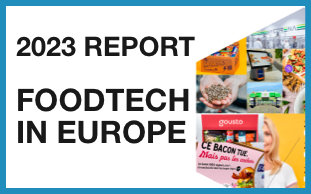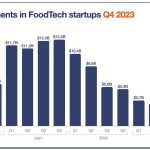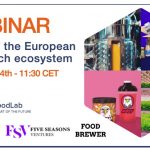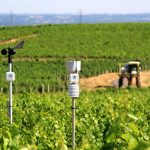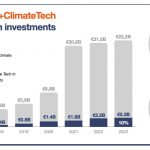We often talk here about agtech and foodtech. These ecosystems are made of thousands of projects, startups, researchers, and partnerships with large companies. They often point in very different directions (indeed, we may wonder what is common between alternative proteins and agriculture robots), and it is hard to make sense of them.
Today, rather than looking forward, I want to look at both our past and our present to better understand where we are and why there is a need for a food revolution.
First, where do we come from?
In the history of food, we can identify two main food revolutions which paved our evolution from hunters & gatherers to farmers to city dwellers:
1 – The neolithic revolution when humans transitioned from hunting and gathering to agriculture and livestock domestication.
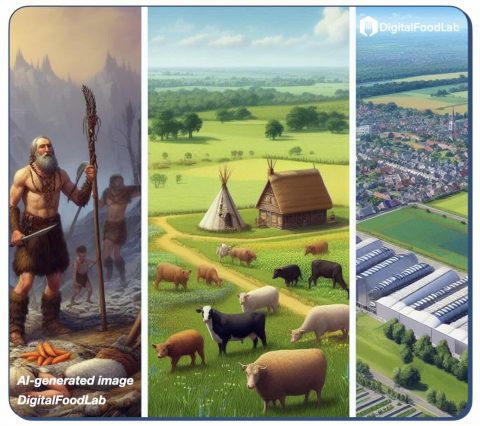
Counterintuitively to what we may imagine, it negatively affected health. Farmers depended on a single cereal (varying from region to region), had a much less diverse diet (almost always lacking many nutrients), and often faced famines (while our nomad ancestors moved to another region when food was scarce, the farmer is tied to its land).
2 – The Green Revolution and food Industrialisation of the 20th century, when we moved from scarcity to over-abundance.
The prioritization of high-yield crops, breeding, the use of fertilizers, livestock optimisation… All these factors led to an unprecedented surge in productivity. And, as a large share of the population moved to cities, they became less connected to what they ate. It was reinforced by industrialisation, which created a new range of highly-processed tasty foods (often misleading our senses through flavouring).
And now, where are we?
Basically, the previous revolutions brought two benefits and two plagues. On the positive side, they enabled an ever growing population, and reduced the number of people needed to cultivate the food we need. On the negative side, both had a damaging impact on our environment and health (even if we should say the green revolution lifted billions of people out of poverty and starvation, so for all its wrongdoing, it was short of a miracle).
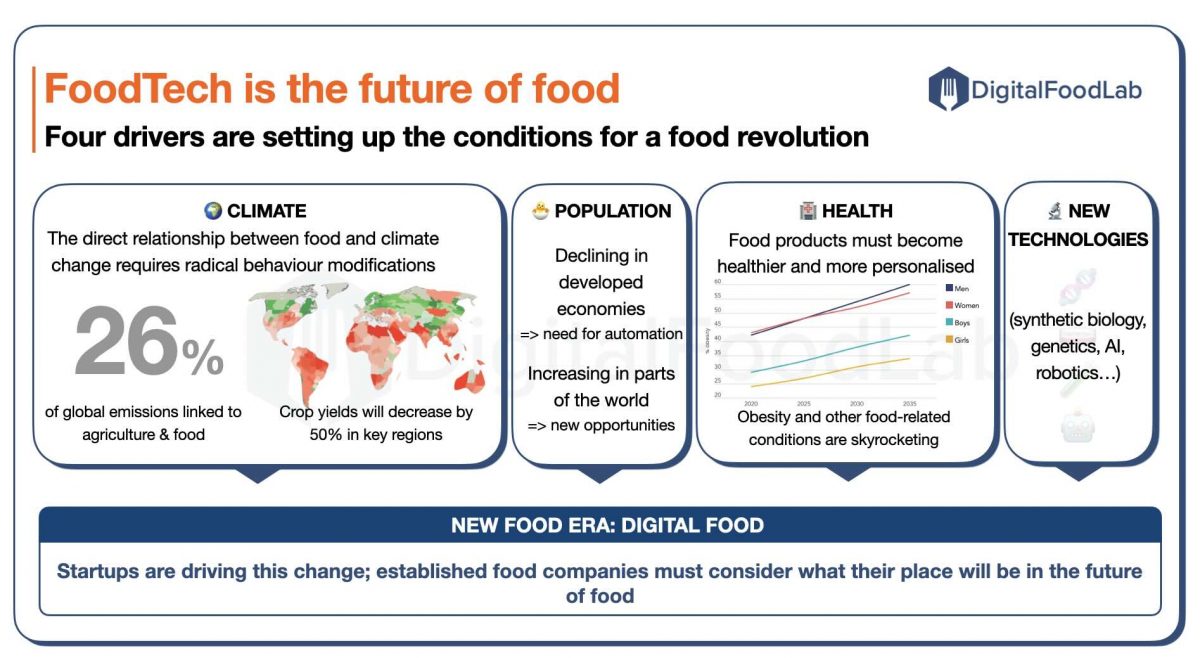
Today, the situation is quite bad, but as often when things get complicated, this is setting up the stage for a fast-paced evolution. At DigitalFoodLab, we even consider that we are now entering into a third food revolution due to four drivers:
- climate change: our food system (mostly livestock farming and intensive agriculture) is impacting the environment (up to a fourth of global emissions are linked to food) AND the evolution of climate is having an impact on agriculture yields (one of the most under appreciated aspects of climate change). This creates a need to build a more resilient and more sustainable food system.
- population change: if the challenge was limited to climate, we could go back to where we were previously and use less inputs, farm less and all would be great. But, we are planned to be 10 billion humans in a few decades. As billions are lifted out of poverty and reach the middle class, they also want to consume more, and notably more meat and dairy products.
- Also, and almost at the opposite end of the spectrum, in most developed economies, the population is ageing and shrinking. Global food companies will have to shift their business models, often based on the growth of the demand, to create value for these demanding consumers.
- health: the transition from scarcity to abundance (food is excessively cheap if you consider how much people should spend three or four generations ago just to avoid starvation) is making us fatter and less healthy. The rate of obesity, diabetes, and many other food-related conditions is skyrocketing worldwide, notably in developing economies, often crippling their growth prospect. Again, this creates the need for innovative solutions to better help us navigate our ancestral impulse of eating as much as we can when food is available.
- technologies: these are rather enablers than a driver in itself. A set of new technologies, often not primarily related to food (such as artificial intelligence) have huge applications all over the value chain, from farm to fork.
The third food revolution: toward the digital food era
All these elements create the conditions and the need for a third food revolution. We call it the “digital food revolution” (and indeed, that’s why we called ourselves DigitalFoodLab).
As its predecessors, this third revolution should make food even more accessible to all, but this time, using the many resources in our hands, it has to be different as it must make food better for us, humans.
And to complete the circle, now let’s come back to the starting point of this discussion: agtech and foodtech. Established companies are wonderful when incremental innovations and scaling production is concerned, not so much when it is about disruption. That’s where startups come up. From what has been created by researchers and others, entrepreneurs find ways to create value. With limited consequences, they can experiment with many different business models and technologies. When they succeed, either they have the ability to scale, or existing companies will be able to do it.
However, established companies are not following this path; they are far from it. We already observe great differences between those planning for the future and those focused on their day-to-day activities.

